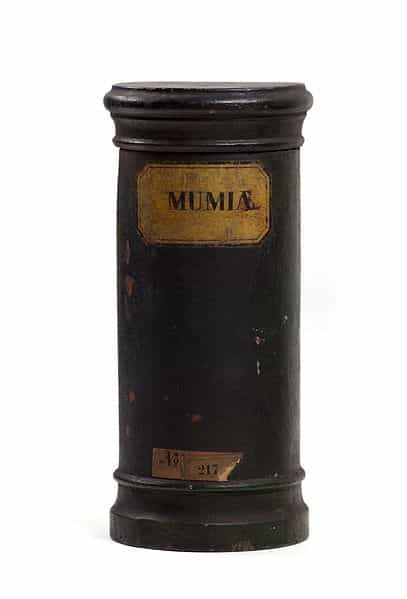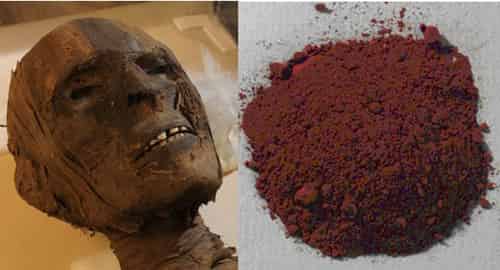Throughout the centuries, doctors have employed healing techniques devoid of any scientific basis.
A notable example was mummy powders. For centuries, they were deemed a genuine panacea, credited with various healing virtues, from treating ulcers and mending broken bones to addressing epilepsy and toothaches.
This peculiar treatment gained acceptance among all social classes, including royalty. It’s known that the French monarch Francis I never left the palace without a good supply of sachets containing mummy powder.
The use of mummies for medicinal purposes stemmed from a linguistic confusion. In ancient times, the Persians traded in bitumen, a black, viscous liquid believed to possess health properties, known in their language as “mummia.”
When Eastern merchants encountered Egyptian mummies, they were pleased to find them coated in bitumen, or “mummia,” as they called it in their language.
However, the mummies were actually coated with special resins, quite similar to bitumen, serving the function of preserving the mummified remains in good condition.
This is where the confusion arose. If “mummia” was believed to have miraculous properties for the human body, it was assumed that the Egyptian mummies, impregnated with “mummia,” would possess similar effects.
Over time, the error perpetuated, and the term “mummia” began to refer to the entire body of the mummy, popularizing the use of mummified bodies as a therapeutic method.
The Crusades played a significant role, facilitating contact with Arab culture and introducing Eastern wonders into Christian Europe.
Grave Robbers
The circumstances of this linguistic confusion were dire. There was an intense pursuit to acquire Egyptian mummies, the obtained powder was often diluted in wine, water, or honey and provided to a troubled clientele.
In some instances, the powder wasn’t sold; instead, pieces of the corpse or even a blackish paste were offered. Additionally, ointments were crafted from mixtures of petroleum jelly and oily substances, credited with supposed rejuvenating effects on the skin. In other words, the mummies became a highly profitable business.
Initially, finding mummies to pulverize wasn’t challenging. However, the relentless surge in demand led to the scarcity of this raw material.
Despite grave robbers’ extensive efforts, their work couldn’t keep up with the flourishing European market, prompting them to resort to forgery.
Soon enough, unscrupulous merchants emerged, readily mummifying the bodies of slaves, abandoned corpses, or executed individuals.
Their resulting counterfeits were of such high quality that X-ray tests conducted on the mummies revealed some museums displayed fake Egyptian mummies in their collections.
Mummy Powder: A New Purpose
In the 12th century, Egyptian mummies were initially used for medicinal purposes in European courts, a practice that peaked during the Middle Ages.
During the Renaissance, an interest in science emerged, leading to the rejection of magical treatments. The French surgeon Ambroise Paré (1517-1590) was among the first to condemn the use of mummy powder.
Later, Father Feijoo (1676-1764), a Benedictine monk, followed suit. Despite these criticisms, the use of mummy powder persisted until the early 18th century, when European pharmacies became certain that crude counterfeits were being sold.
Consequently, mummies found new purposes. They were mixed with solvents and resins, transforming into an exceptional brown pigment. Painters of the 18th century christened this pigment “mummy brown,” marking the inception of a new business.







